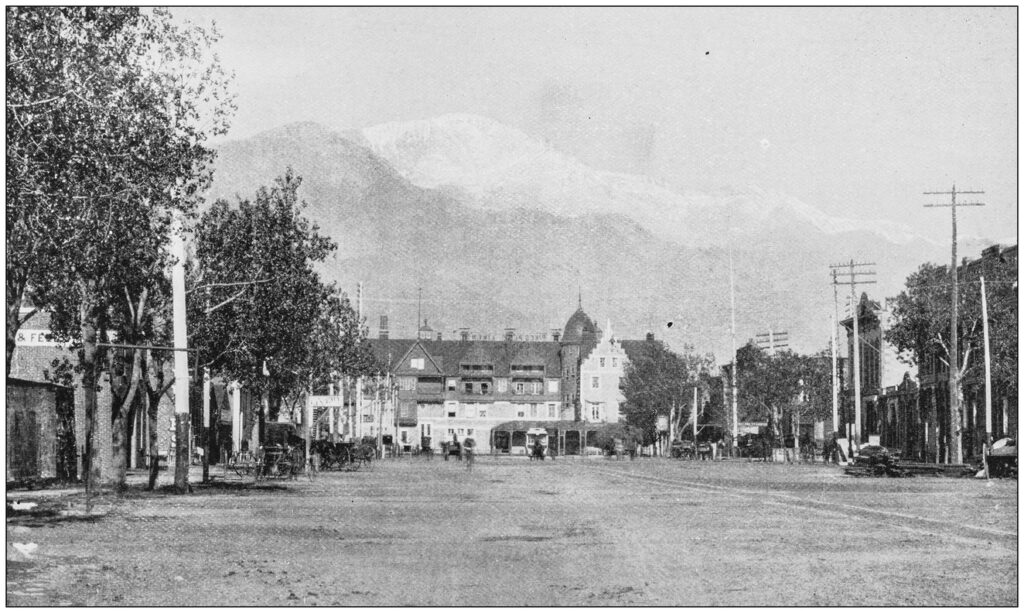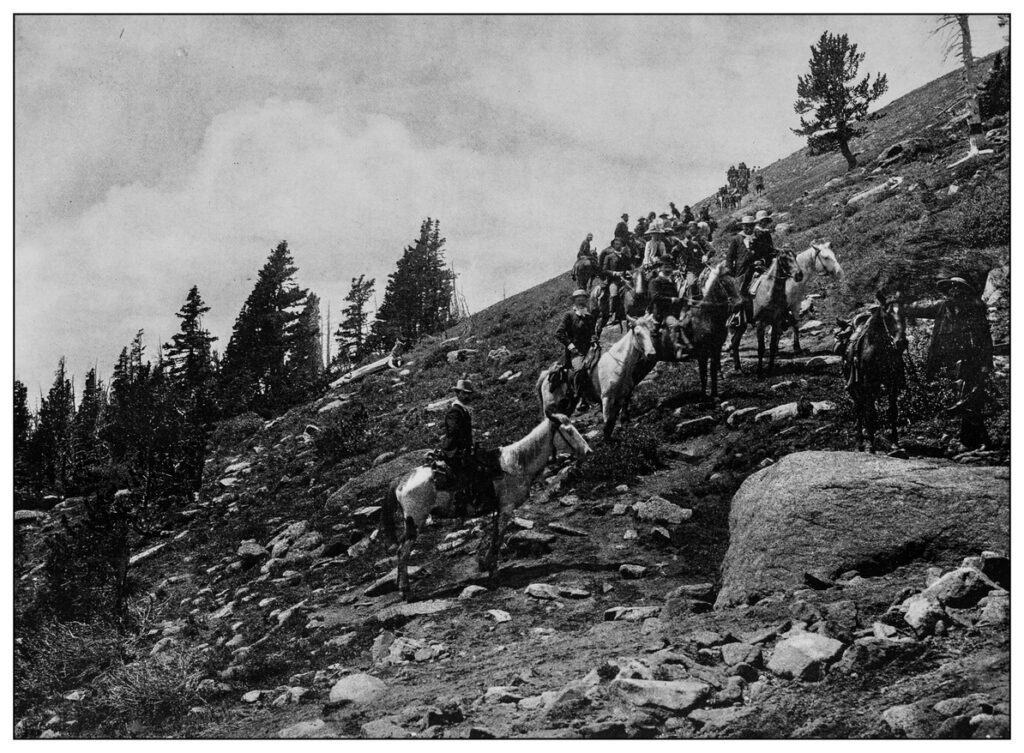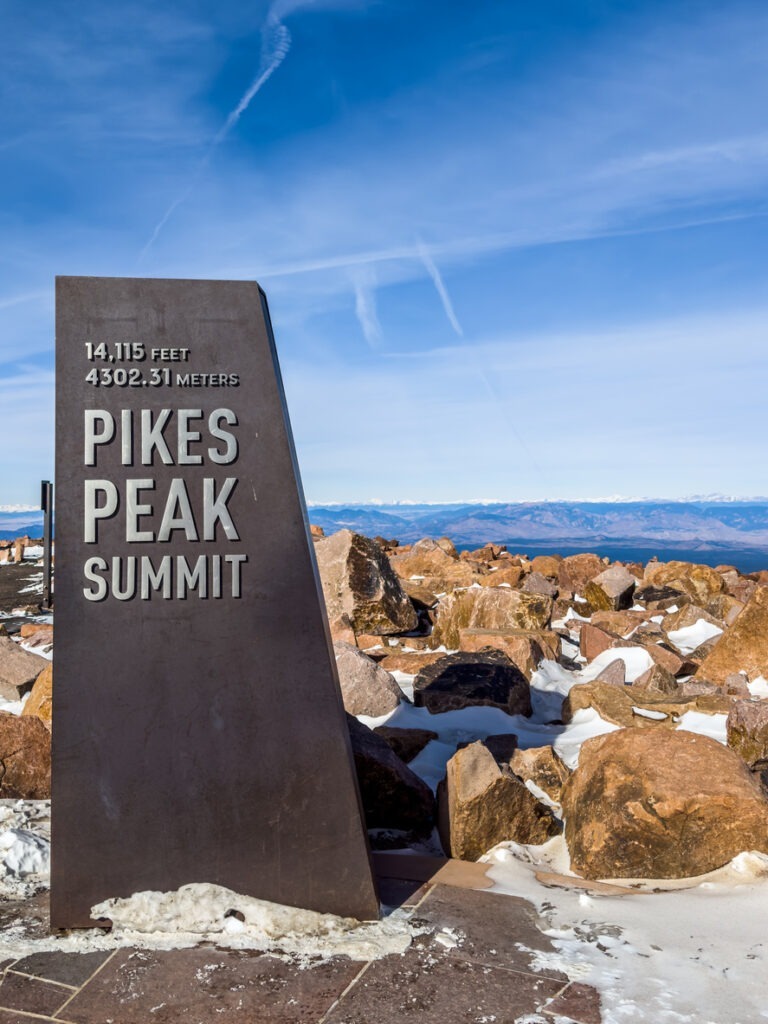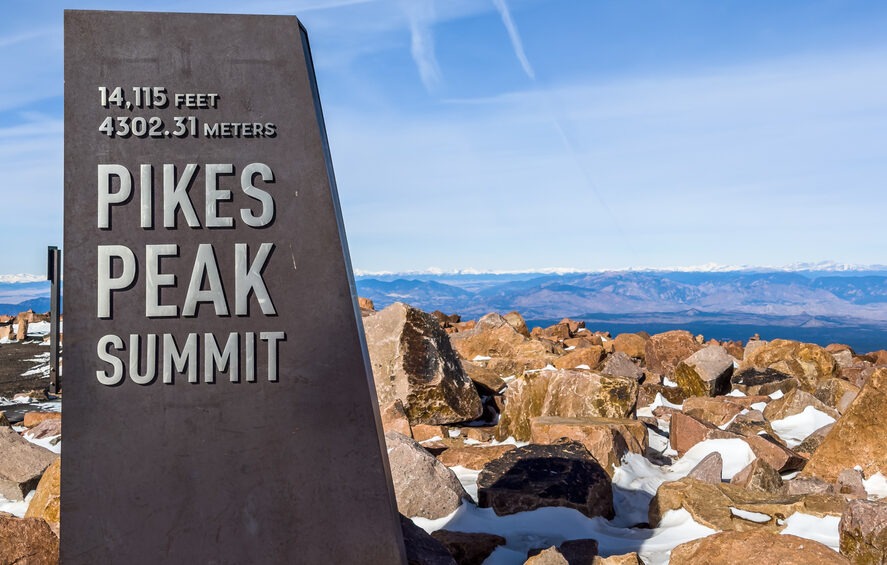Winding its way to the 14,115-foot summit of one of Colorado’s most iconic mountains, the Pikes Peak Highway is more than just a scenic byway. It’s a historic route carved into the Rocky Mountains that tells the story of exploration, innovation, and a century-long human fascination with altitude and adventure. Whether you’re driving it for the views, biking it for the thrill, or hiking nearby for the challenge, knowing the history of the Pikes Peak Highway deepens your appreciation for every curve and switchback.
Let’s take a ride through time and trace how this incredible road came to be.

Before the Road: A Mountain of Meaning
Before any wheels touched the flanks of Pikes Peak, the mountain held significance for generations of Native American tribes. The Ute people referred to it as “Tava,” meaning “Sun Mountain.” It stood as a sacred place and an important landmark long before it caught the attention of European settlers. To learn more about the Ute tribe and their relationship to Tava, check out THIS resource.
In 1806, American explorer Zebulon Pike attempted to summit the mountain that would later bear his name. Despite being forced to turn back due to harsh conditions, Pike’s expedition marked the beginning of the mountain’s prominence in American maps and minds.
By the mid-19th century, Pikes Peak had become synonymous with westward expansion, even lending its name to the famous “Pikes Peak or Bust” slogan during the 1859 Colorado Gold Rush.

The Birth of the Pikes Peak Highway
Fast forward to the early 20th century. Automobiles were a new and exciting technology, and a growing group of visionaries sought to prove the capabilities of this novel invention. Spencer Penrose, a wealthy philanthropist and businessman who had made his fortune in mining, saw an opportunity not only for economic development but also for grand spectacle.
In 1915, Penrose financed the construction of the Pikes Peak Highway, envisioning a route that would allow tourists to travel from the base of the mountain all the way to the summit by car. The original road was made of gravel and took an extraordinary amount of labor to build, with workers battling the elements at high altitudes using early 20th-century equipment and methods.
Despite the challenges, the road was completed in just over two years. That same year, the Pikes Peak Auto Hill Climb, now known as the Pikes Peak International Hill Climb (PPIHC), was inaugurated. This legendary race, also called the “Race to the Clouds,” is still held annually. It draws drivers from around the world to test their mettle against 12.42 miles of steep, winding road.

Evolution of the Road
Although the road started as a narrow gravel trail, improvements came steadily over the decades. Increased tourism and advancements in transportation prompted Penrose and later custodians of the road to enhance safety, widen the route, and improve driving conditions.
For most of the 20th century, the Pikes Peak Highway remained largely unpaved. However, that began to change after a lengthy legal battle in the late 1990s and early 2000s. The Sierra Club filed a lawsuit against the City of Colorado Springs, arguing that the gravel road was eroding into surrounding ecosystems and harming alpine tundra.
As a result of the court’s decision, the City of Colorado Springs began paving the highway in sections, eventually completing the work in 2011. The result is a safer, more environmentally sustainable route that is now fully paved from base to summit.
The Hill Climb: Racing into History
A discussion about the history of the Pikes Peak Highway would be incomplete without mentioning the legendary Pikes Peak International Hill Climb. From its very first race in 1916, this event has become one of the most prestigious motorsport challenges in the world.
Drivers compete to ascend more than 4,700 vertical feet over the course of just over 12 miles. The course includes 156 turns. These turns range from sweeping curves to hairpin switchbacks. Drivers and cars are challenged as the oxygen thins with every foot of elevation gained.
Over the years, the race has hosted everything from souped-up motorcycles to electric supercars. In 2018, French driver Romain Dumas set the all-time course record in an all-electric Volkswagen I.D. R, finishing in just 7 minutes and 57 seconds – a testament to how technology and tradition intersect at the summit of Pikes Peak.
To learn more, check out the Pikes Peak International Hill Climb’s website HERE. You can also visit the Penrose Heritage Museum at 11 Lake Circle, Colorado Springs.
The Highway Today
Today, the Pikes Peak Highway is one of Colorado’s most popular scenic drives. Open year-round (weather permitting), it provides access not just to the summit but to a number of stunning overlooks, trailheads, alpine lakes, and picnic areas along the way.
The road is managed by the City of Colorado Springs, and there’s a toll to access the route. Visitors can drive themselves, take a guided tour, or opt for an adventure such as Broadmoor Outfitters’ Cog Up/Bike Down Pikes Peak tour – where riders take the Cog Railway up and descend the highway on a mountain bike, fully supported by expert guides.
In addition to tourism, the road serves as a unique outdoor classroom. Interpretive signs along the highway explain the geology, flora, fauna, and history of the region, making it a rich educational experience for all ages.
To learn more about the new Summit Visitor Center, click HERE.

High-Altitude Engineering
Building and maintaining a road above 14,000 feet comes with its own set of challenges. The highway must be monitored for rockfalls, snow accumulation, and seasonal damage. Maintenance crews face extreme conditions and a short working season.
Still, the road persists. It’s a living piece of history – one that continues to evolve while offering visitors unparalleled access to the alpine wilderness.
Environmental Stewardship
The paving of the road was just one step in the ongoing effort to protect the fragile alpine ecosystem around Pikes Peak. The City of Colorado Springs, in collaboration with environmental groups, now implements various sustainability initiatives along the highway. These include erosion control, wildlife protection measures, and visitor education programs designed to reduce impact and foster responsible recreation.
The Pikes Peak Highway offers a powerful lesson: access and conservation can coexist, but only with deliberate, sustained effort.
A Legacy That Lives On
The history of the Pikes Peak Highway is more than a tale of roads and races. It’s a story of ambition, ingenuity, and respect for nature. From its earliest days as a gravel track to its modern role as a gateway to one of Colorado’s most famous fourteeners, the highway has helped millions of people experience the magic of high-altitude adventure.
For locals, it’s a beloved landmark. For visitors, it’s a bucket list experience. And for those who crave challenge, it’s a path paved with possibility.
Experience the Pikes Peak Highway with Broadmoor Outfitters
Want to make your own mark on the mountain? Broadmoor Outfitters offers a unique way to experience the Pikes Peak Highway through our Cog Up/Bike Down Pikes Peak Adventure. This unforgettable guided tour lets you enjoy the scenic ascent via the Cog Railway. Then take in the thrill of a 13-mile descent by bike, surrounded by sweeping alpine vistas.
Learn more about the Cog Up/Bike Down tour by Broadmoor Outfitters to make the most of your Pikes Peak experience.

